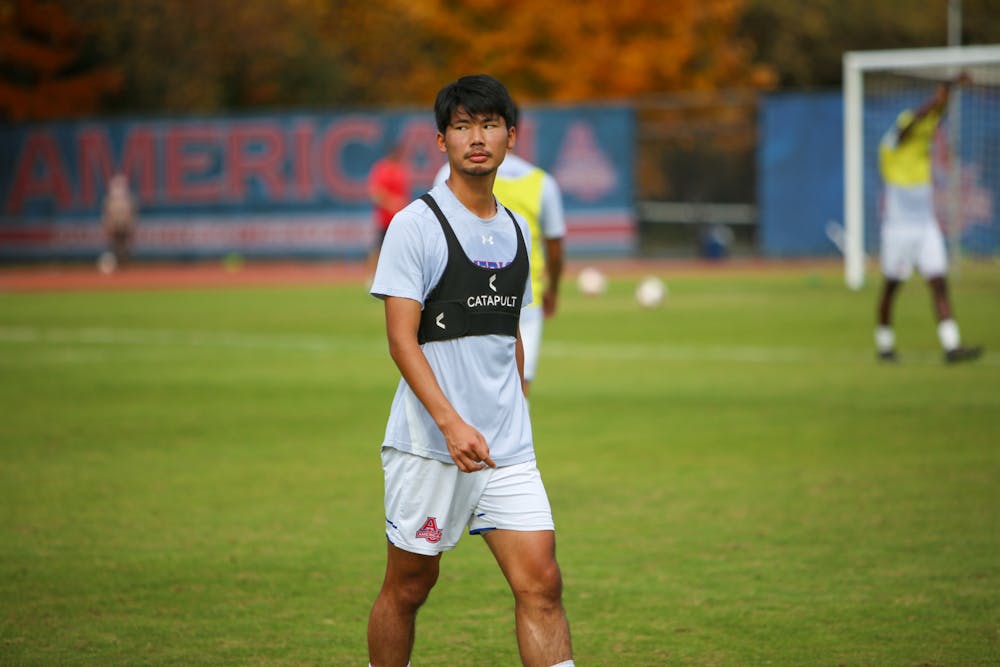In the demanding world of collegiate sports, precision in performance is critical. Many American University athletes are wearing tracking devices that capture various metrics to fine-tune their training regimens.
AU’s athletic programs are utilizing similar devices from two different companies: Polar and Catapult. The main components of both systems are their accelerometers and GPS units, according to Assistant Athletic Director for Athletic Performance Alex Lee.
“They measure tons of metrics, but primarily, they can tell you every time that you're accelerating at different magnitudes, in what direction and if you're stopping,” Lee said.
Not all AU teams wear tracking tools — it’s mostly the field and court sports, excluding volleyball. Field hockey was the first team to begin wearing them a number of years ago, and used the Polar system, according to AU Athletics. Since then, many teams followed suit with Polar, and some eventually transitioned to Catapult. Currently, the field hockey, men’s basketball and men’s soccer programs use Catapult, while women’s basketball, women’s soccer and women’s lacrosse prefer Polar.
Catapult and Polar both have a “load” that the companies track slightly differently, according to Lee. “This parameter tells you how much work the player did during a training session or game,” says the Catapult website. “It has advantages over using distance as an effort metric because it accumulates during tackles, ruck work, or other non-running activities.”
Polar tracks heart rate more accurately, and its load is based on the amount of time the athlete spends in different percentages of their heart rate. Catapult’s load is based more on total accelerations of any magnitude, and in any direction, divided by time.
“That load becomes somewhat of a unit of how taxing a practice or game was,” Lee said.
AU athletes wear the devices in all training sessions and games. Lee uses the data to work with coaching staff and create specific training programs that suit athletes’ needs.
“Let's say it's preseason, and we know a hard practice is usually this much load, or a game is this much load, we can gradually and safely ramp the athletes up into that,” Lee said. “It kind of goes to knowing the demands of the sport more accurately.”
Educating coaches about how to quantify the difficulty of their conditioning and drills is extremely valuable. By tracking metrics such as the density of a movement, coaches and trainers can give athletes personalized training programs for the offseason that are highly specific to their sport and position.
Importantly, the tools help with recovery and injury prevention.
“Typically, when athletes get injured, it's when they're doing too much too soon, or when they're doing too much for too long,” Lee said. Tracking the load that athletes are placed under helps mitigate fatigue.
Tracking systems are also helpful in charting athletes’ progress. With speed work, for example, athletes can receive specific feedback about how fast they are running and how they are improving.
“The data that we get really helps in terms of coaches monitoring our loads and our mental work around that,” men’s soccer senior defender Cooper Nunn said. “The team is progressing and trying to be as professional as we can.”
This article was edited by Penelope Jennings, Delaney Hoke, Abigail Pritchard and Abigail Turner. Copy editing done by Luna Jinks and Ariana Kavoossi.





